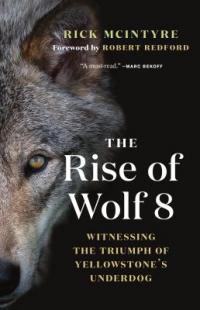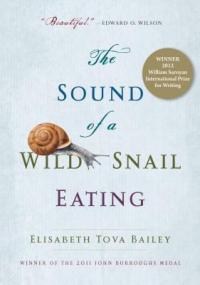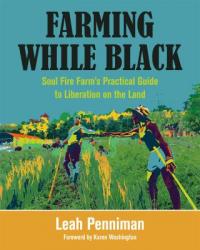Maybe it’s the sunshine, or the grass peeking out, or the new bird songs, but every spring I get all worked up about the coming warm weather, and start setting my “outdoor” goals for the year. How many Saturdays do I want to get up at 5 am? What National Park would make for a great place to see a sunset? What’s something that’s scary and I want to push myself to try? How can I be “greener”? What weird plant will I attempt to not murder next? If you’re the type of person who puts themselves through this semi-torturous,slightly-masochistic process as well, let me recommend some help to you: DPL’s Popular Science Core Collection list, which contains wonderful, well-vetted titles from a variety of scientific realms, including works on the outdoors. Read on to find your inspiration for your next great nature adventure.
It only seems timely to mention The Rise of Wolf 8: Witnessing the Triumph of Yellowstone's Underdog by Rick McIntyre, after the past years’ decision to reintroduce wolves in Colorado. Wolf expert and interpreter Rick McIntyre takes us through the incredible story of Wolf 8 and his packs with factual and detailed descriptions of the land and behavior of wolves. McIntyre transports the readers to Yellowstone as he observes Wolf 8, his ancestors and his kin for 25 years.
Speaking of wolves, I have to mention my tornado-of-ceaseless-energy dog, Gwen, who loves to run around the Westminster Hills Dog Off-Leash Park as if she was in fact, raised by wolves. Needless to say, I’m really grateful for this park, despite the fact that it sits adjacent to Rocky Flats, the site of one of the largest, most covered-up U.S. environmental disasters of our time. When I go, I always think about Full Body Burden: Growing Up in the Shadow of Rocky Flats by Kristen Iversen. I remember the images that Iverson paints as I watch Gwen dive mouth-first into the water (why?!), as I look at the cottonwoods that miraculously grow along the drainage ditch, while we look for eagles nesting across the street, when I think about my parents who protested the site, and as I picture the fires and explosions that to this day wreak deep environmental damage. It’s terrifying (it’s also on the True Crime Core Collection list), humbling, angering, and packed full of lessons about greed, family, and environmental protection. It’s really a must read, especially if you live on the front range.
Like it better inside? No problem; you don’t even need to go outside to experience nature: The Sound of a Wild Snail Eating by Elisabeth Tova Bailey is an intimate story of illness, observation, metaphor, and hope, a National Outdoor Book Award winner and was even adapted into a short film. When the author becomes bed ridden with a mysterious illness, she finds solace in watching a snail, Neohelix albolabris, who has appeared in a terrarium next to her bed. She dives into literature on the woodland snail, and intersperses her most fascinating finds between thoughts about the meaning of life, and the preservation of even the tiniest creatures.
Another way I experience nature is by gardening. Could it be that the microbes in the soil are really helping my mental health? Yes. It could also be that it gives me the space to process some of the racial injustices occurring in our world, in particular the disproportionate effect of food deserts on humans who are Black, indigenous, and people of color. Farming While Black: Soul Fire Farm's Practical Guide to Liberation on the Land by Leah Penniman, is not only a great guide to best agricultural practices, but also a beautifully written “‘how to’ guide for aspiring African-heritage growers to reclaim their dignity as agriculturists and for all farmers to understand the distinct, technical contributions of African-heritage people to sustainable agriculture” (from the publishers description).
So, my fellow nature lovers, here’s to your next mountain, garden, science experiment, or dream. May this warming season be full of wonder, may you have safe, humbling experiences, and may you take the time to notice all the small things. Cheers!
A guest blog by Amy E., DPL librarian and member of the Pop Science core collection team



